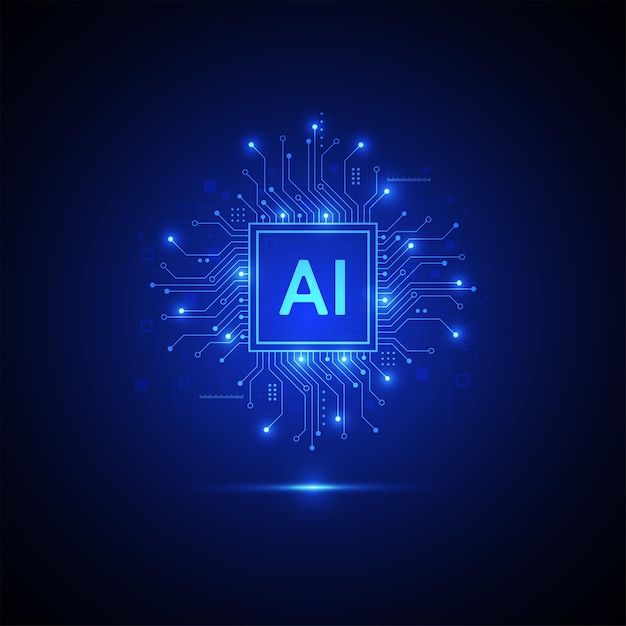Transfer learning has emerged as a powerful technique in the field of computer vision, enabling practitioners to leverage existing models trained on large datasets for various tasks. This article delves into the concept of transfer learning, its applications, benefits, and best practices, offering a comprehensive guide to utilizing this method effectively in computer vision projects.
1. Introduction
Transfer learning refers to the technique of transferring knowledge gained from one task (the source domain) to another related task (the target domain). In computer vision, this approach is invaluable, allowing practitioners to build high-performing models even when they have limited labeled data. Unlike traditional machine learning methods that often require extensive data collection and training from scratch, transfer learning capitalizes on pre-trained models to accelerate the learning process and improve performance.
2. Concepts of Transfer Learning
Source Domain vs. Target Domain: In transfer learning, the source domain is the dataset used to train a model initially, while the target domain is the new dataset for which predictions are desired. The effectiveness of transfer learning often hinges on the similarity between these domains; the more closely related they are, the better the transfer of knowledge.
Pre-trained Models: Pre-trained models are neural networks that have been previously trained on large datasets, such as ImageNet. Popular examples include VGG, ResNet, Inception, and MobileNet. Utilizing these models provides a robust starting point for various tasks, allowing practitioners to leverage their learned features for new datasets.
3. Types of Transfer Learning
Feature Extraction: This approach involves using a pre-trained model to extract features from new datasets without modifying the model’s weights. By utilizing the learned representations from the source domain, practitioners can feed these features into a new classifier for the target task.
Fine-Tuning: Fine-tuning is the process of taking a pre-trained model and continuing the training process on a new dataset. This involves unfreezing certain layers of the model and retraining them, allowing the model to adjust its weights based on the new data. Fine-tuning is particularly beneficial when the target dataset is relatively small but shares similarities with the source dataset.

Domain Adaptation: Domain adaptation techniques aim to mitigate the effects of domain mismatch, where the source and target domains differ significantly. This approach often involves modifying the model or data representations to improve performance on the target dataset.
4. Applications of Transfer Learning in Computer Vision
Image Classification: Transfer learning is widely used for image classification tasks. By leveraging pre-trained models, practitioners can achieve high accuracy in classifying images in specialized domains, such as identifying specific types of plants or animals.
Object Detection: In object detection, transfer learning allows for rapid model development. Pre-trained models like Faster R-CNN and YOLO (You Only Look Once) can be fine-tuned to detect objects in new environments, significantly speeding up the development process.
Image Segmentation: Transfer learning plays a crucial role in semantic and instance segmentation tasks. Models like U-Net can be initialized with weights from pre-trained networks, enabling better segmentation performance on medical images or satellite imagery.
Medical Imaging: In the field of medical imaging, transfer learning is particularly valuable. Pre-trained models can help detect diseases in X-rays, MRIs, or CT scans, often outperforming models trained from scratch, especially when labeled data is scarce.
5. Benefits of Transfer Learning
- Reduced Training Time: Transfer learning significantly cuts down on training time and computational resources by starting from an already trained model.
- Improved Performance on Small Datasets: It allows practitioners to achieve high accuracy even with limited labeled data, making it ideal for specialized tasks.
- Leverage Knowledge from Large Datasets: By utilizing knowledge gained from large datasets, models can generalize better to new tasks.
- Enhanced Generalization: Models that utilize transfer learning often show improved generalization to new, unseen data compared to those trained from scratch.
6. Challenges and Considerations
Domain Mismatch: One of the primary challenges of transfer learning is domain mismatch, where differences between the source and target domains can hinder performance. Ensuring some level of similarity between the two domains is crucial for effective transfer learning.
Overfitting: There is a risk of overfitting when fine-tuning a model, especially when the target dataset is small. Careful monitoring and regularization techniques can help mitigate this issue.
Model Selection: Selecting the right pre-trained model is critical. The choice of model should align with the specific requirements and characteristics of the target task.

7. Best Practices for Implementing Transfer Learning
- Select Appropriate Pre-trained Models: Consider the architecture of pre-trained models based on the complexity of the task and dataset size.
- Effective Fine-tuning Strategies: Start with freezing most layers and gradually unfreeze them based on the training progress. This helps prevent overfitting.
- Evaluate Model Performance: Use a mix of metrics (accuracy, precision, recall, etc.) to assess model performance, especially on validation datasets.
- Data Augmentation: Implement data augmentation techniques to artificially expand the dataset and improve model robustness.
8. Future Trends in Transfer Learning
The field of transfer learning is rapidly evolving. Emerging techniques such as few-shot and zero-shot learning are gaining traction, enabling models to make predictions with minimal or no training examples. Additionally, transfer learning is increasingly integrated with large-scale models like Vision Transformers, opening up new avenues for applications in autonomous vehicles, robotics, and beyond.
9. Conclusion
Transfer learning has revolutionized the way computer vision models are developed and deployed. By allowing practitioners to leverage existing knowledge, it accelerates the training process and enhances performance across various tasks. As the field continues to evolve, embracing transfer learning will be essential for those looking to stay at the forefront of computer vision innovation.
10. References
For further reading and exploration of transfer learning in computer vision, consider the following resources:
- Research papers and articles on transfer learning methodologies.
- Online courses focusing on deep learning and computer vision.
- Tutorials and documentation on popular pre-trained models available in frameworks like TensorFlow and PyTorch.
FAQs: Using Transfer Learning in Computer Vision Models
1. What is transfer learning in computer vision?
Transfer learning is a machine learning technique where a model developed for one task (the source domain) is reused as the starting point for a model on a second task (the target domain). In computer vision, this often involves utilizing pre-trained models on large datasets to improve performance on specific tasks with limited data.
2. Why is transfer learning important?
Transfer learning is important because it allows practitioners to:
- Reduce training time and computational costs.
- Achieve high accuracy on small datasets.
- Leverage the knowledge gained from large datasets, enhancing model generalization.

3. What are some popular pre-trained models used in transfer learning?
Some widely used pre-trained models include:
- VGG: Known for its simplicity and deep architecture.
- ResNet: Features skip connections to mitigate the vanishing gradient problem.
- Inception: Uses multiple filter sizes to capture different features.
- MobileNet: Optimized for mobile and edge devices with limited resources.
4. How do I decide between feature extraction and fine-tuning?
- Feature Extraction: Use when you have a small dataset and want to quickly adapt a pre-trained model without significant changes.
- Fine-Tuning: Choose this when you have a larger dataset and want to refine the model’s weights to improve performance on the target task.
5. What challenges are associated with transfer learning?
Challenges include:
- Domain Mismatch: Significant differences between the source and target domains can lead to poor performance.
- Overfitting: Fine-tuning on small datasets can cause the model to overfit, reducing its ability to generalize.
- Model Selection: Choosing the appropriate pre-trained model based on the task is critical for success.
6. What are some best practices for implementing transfer learning?
- Select a pre-trained model that is relevant to your task and dataset.
- Start with feature extraction and gradually explore fine-tuning as needed.
- Utilize data augmentation techniques to improve model robustness.
- Regularly evaluate model performance using a combination of metrics.
7. How can transfer learning be applied in specialized fields like medical imaging?
Transfer learning is particularly valuable in medical imaging, where labeled data can be scarce. Pre-trained models can effectively identify diseases in X-rays, MRIs, or CT scans, often outperforming models trained from scratch.
Tips for Effective Transfer Learning in Computer Vision
- Understand Your Data: Familiarize yourself with the characteristics of both the source and target datasets. This knowledge can inform your choice of pre-trained model and the method of transfer learning.
- Experiment with Different Models: Don’t hesitate to try multiple pre-trained models to see which one performs best on your specific task. Performance can vary significantly based on the model architecture.
- Monitor Overfitting: Pay close attention to training and validation loss. If the model performs well on training data but poorly on validation data, it may be overfitting.
- Use Early Stopping: Implement early stopping during training to prevent overfitting. Monitor validation performance and stop training once performance begins to degrade.
- Adjust Learning Rates: Consider using a lower learning rate when fine-tuning a pre-trained model to maintain the learned features while making small adjustments.
- Leverage Data Augmentation: Use data augmentation techniques to artificially expand your dataset, making the model more robust and better at generalizing.
- Evaluate Performance with Multiple Metrics: Use a variety of evaluation metrics (accuracy, precision, recall, F1-score) to gain a comprehensive understanding of your model’s performance.
- Stay Updated on Advances: Transfer learning is an evolving field. Stay informed about new models and techniques through research papers, online courses, and community discussions.
- Document Your Process: Keep detailed records of your experiments, including model architectures, hyperparameters, and performance metrics, to facilitate reproducibility and continuous improvement.
- Engage with the Community: Participate in online forums and communities related to computer vision and transfer learning. Sharing experiences and insights can lead to valuable learning opportunities.